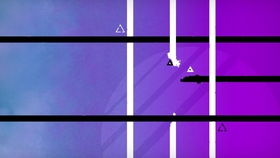Content:
Lure fishing has gained immense popularity among anglers for its exciting and dynamic nature. It involves casting artificial lures that mimic the movement of real fish, attracting them to bite. However, one of the most common challenges faced by lure fishers is getting their lures snagged on the bottom or underwater obstacles. In this article, we will discuss various techniques and tips to help you avoid snags while mastering the art of lure fishing.
Choose the Right Lure
The first step in avoiding snags is selecting the appropriate lure for the fishing environment. Different lures are designed for various types of water and fish species. Consider the following factors when choosing a lure:
a. Size: Match the size of your lure to the size of the fish you are targeting. Larger lures are more likely to snag on underwater obstacles.
b. Shape: Some lures have a more streamlined shape, reducing the chances of snagging. Choose a lure with a narrow profile and a natural swimming motion.
c. Weight: Heavier lures can help you cover more distance and reach deeper water, but they are more prone to snagging. Find a balance between weight and your fishing technique.
Learn the Basics of Casting
Proper casting technique is crucial in avoiding snags. Here are some casting tips to help you improve your accuracy and reduce snags:
a. Master the overhead cast: This is the most common casting technique and allows for greater distance and accuracy. Practice casting in a straight line to avoid snags.
b. Use a wrist cast: This technique involves using your wrist to propel the lure, resulting in a more precise and controlled cast. It is particularly useful when fishing in tight spaces.
c. Adjust your casting angle: Cast at an angle to the target, rather than directly overhead. This helps you cover more water and reduces the chances of snagging.
Pay Attention to Your Line
The condition of your fishing line plays a significant role in avoiding snags. Here are some tips to ensure your line is in good condition:
a. Use high-quality line: Invest in a good quality fishing line that is suitable for your fishing environment. Braided lines are more durable and less prone to snags than monofilament lines.
b. Check for kinks and snags: Regularly inspect your line for any kinks or snags. These can lead to poor casting and increased chances of snags.
c. Keep your line tight: Maintain a tight line between your rod tip and lure. This helps you feel the bite and react quickly, reducing the chances of a snag.

Be Mindful of Your Surroundings
Understanding the underwater terrain and obstacles in your fishing area is crucial in avoiding snags. Here are some tips to help you navigate the water:
a. Study the area: Before you start fishing, take some time to study the underwater terrain. Look for areas with rocks, logs, or other obstacles that could cause snags.
b. Use a fishfinder: A fishfinder can help you identify underwater structures and avoid them while fishing.
c. Adjust your technique: If you encounter an area with many snags, adjust your technique accordingly. For example, you can cast at a lower angle or use a lighter lure to reduce the chances of snagging.
Practice Patience and Persistence
Lastly, be patient and persistent in your pursuit of mastering the art of lure fishing. Avoid rushing your casts and take your time to learn the nuances of your fishing environment. With practice, you will become more skilled at avoiding snags and enjoying a successful fishing experience.
In conclusion, avoiding snags while lure fishing requires a combination of proper lure selection, casting technique, line maintenance, and an understanding of your fishing environment. By following these tips and practicing regularly, you will enhance your lure fishing skills and reduce the frustration of snags. Happy fishing!












